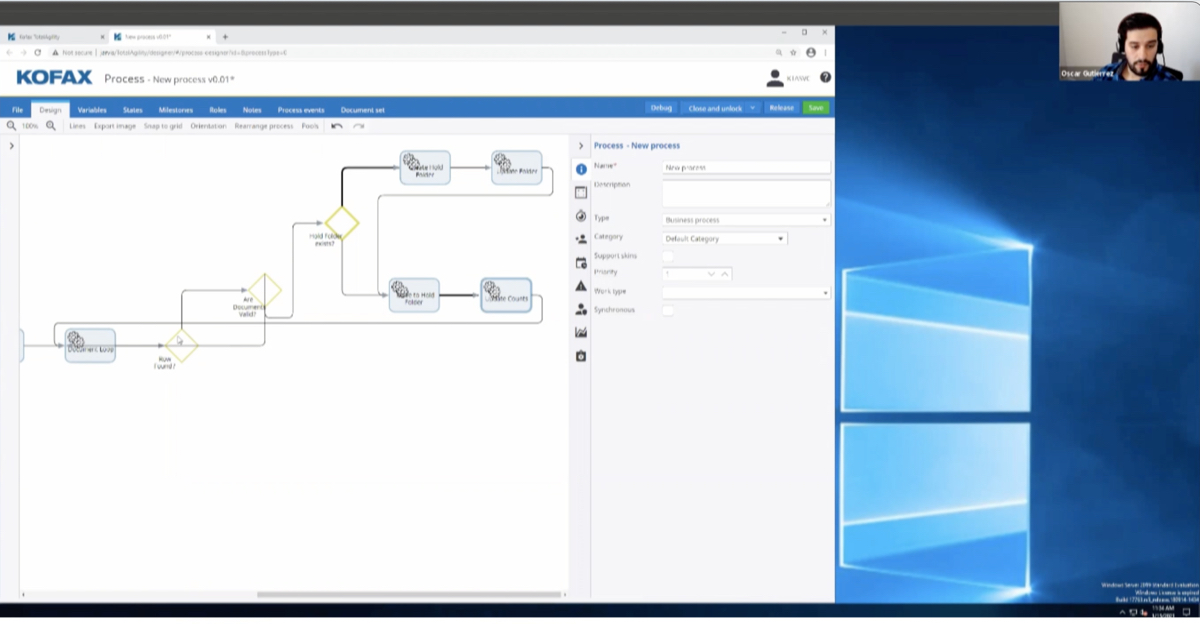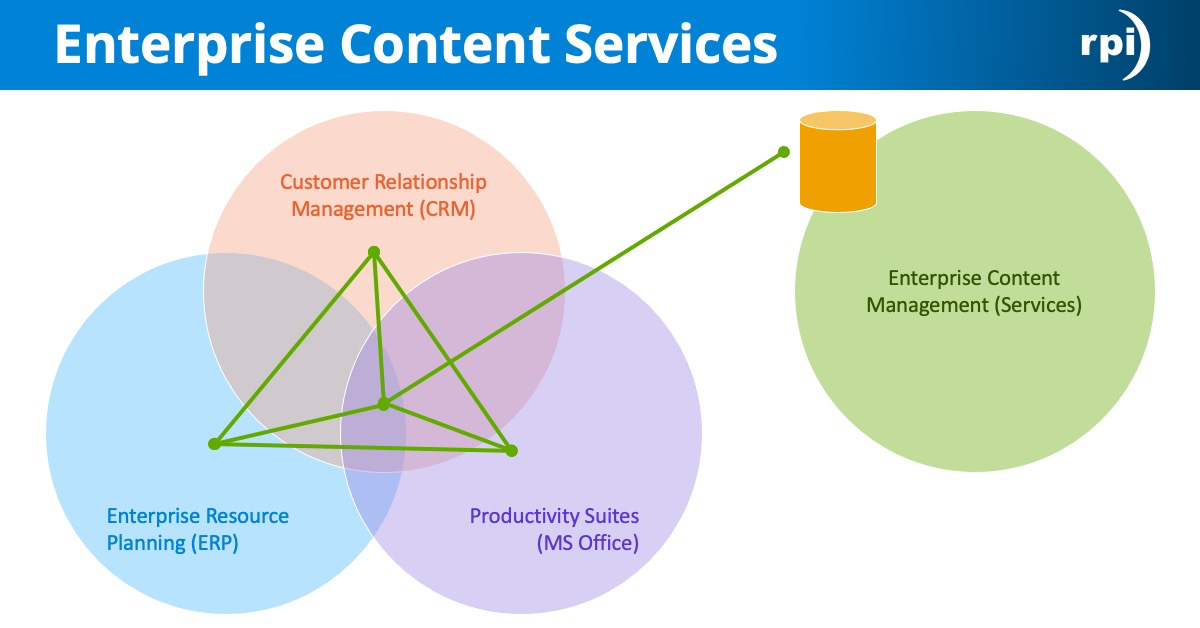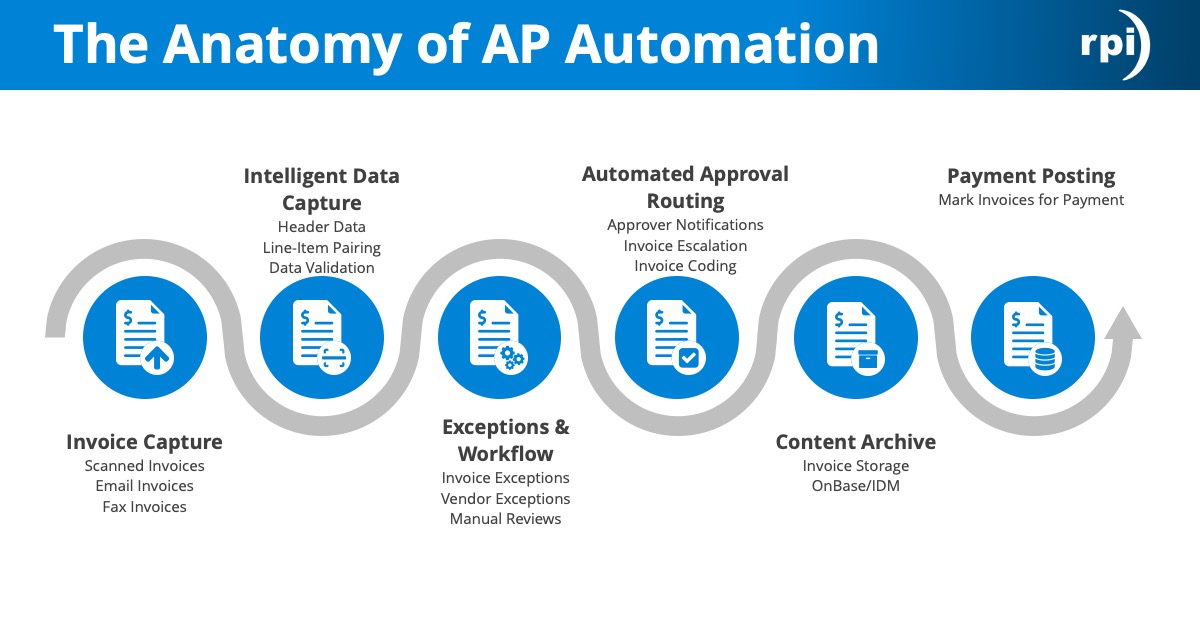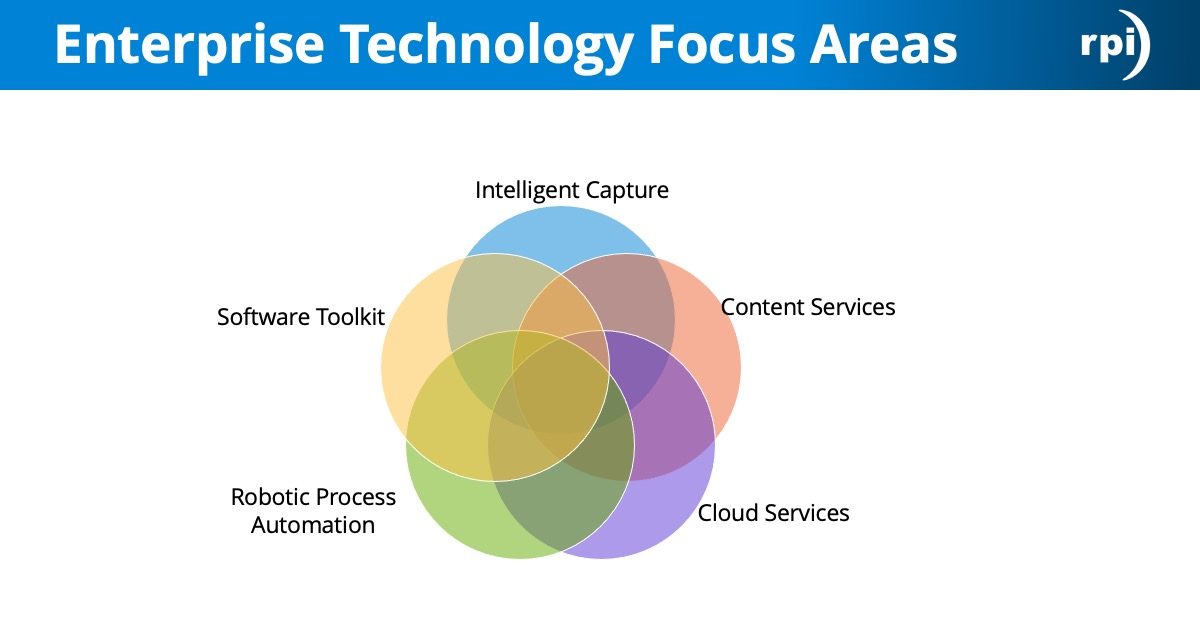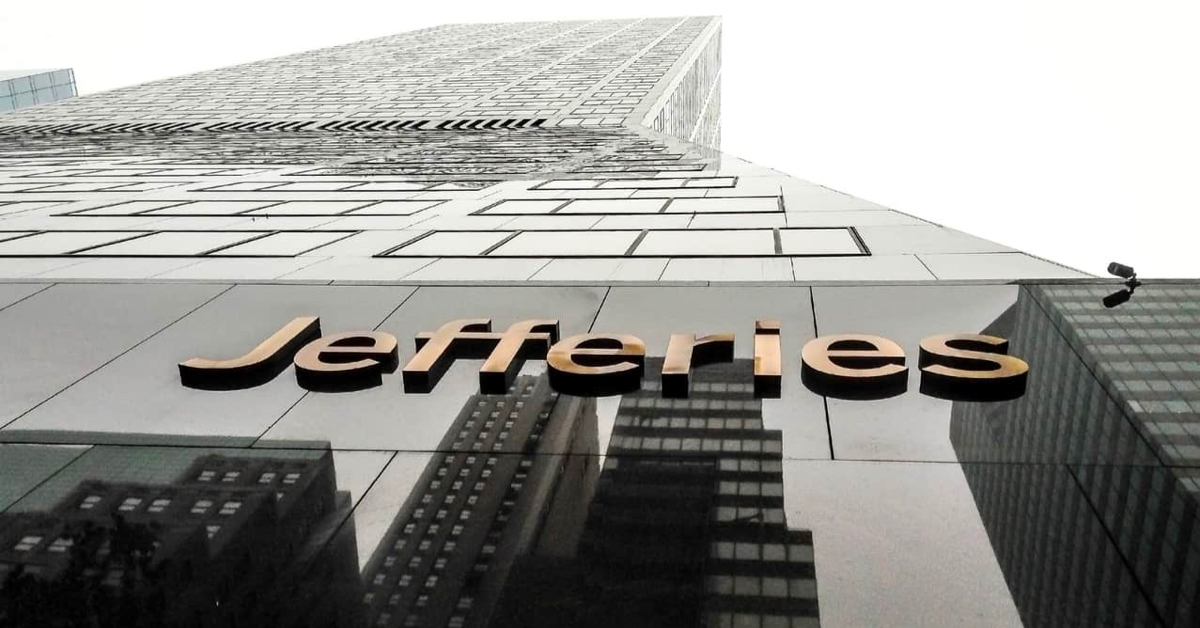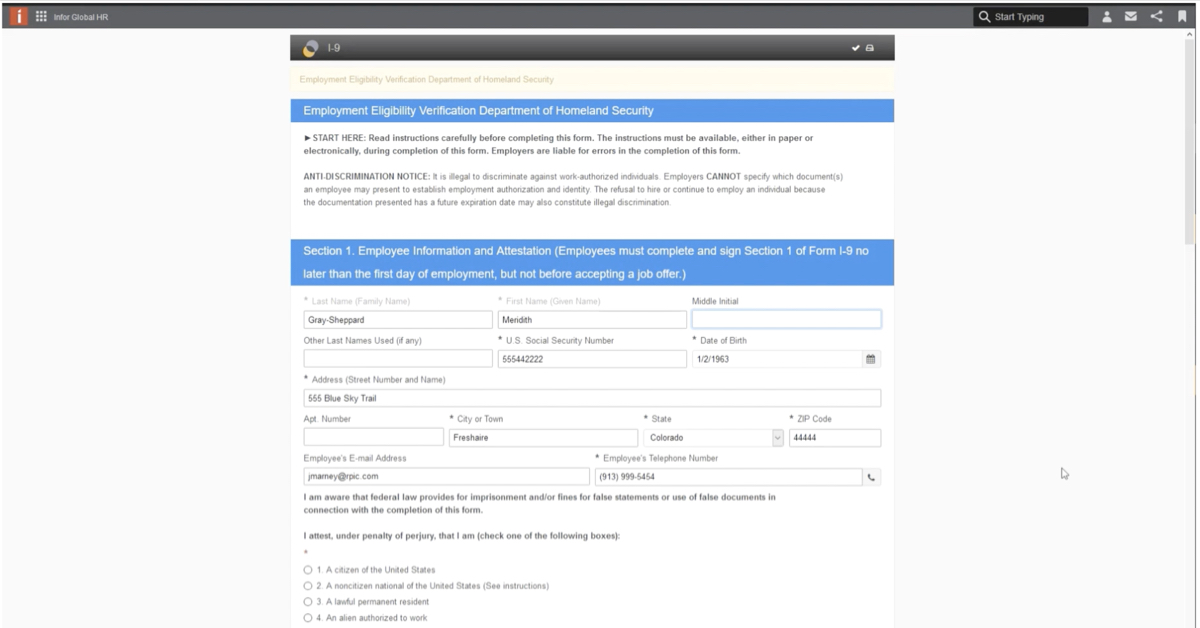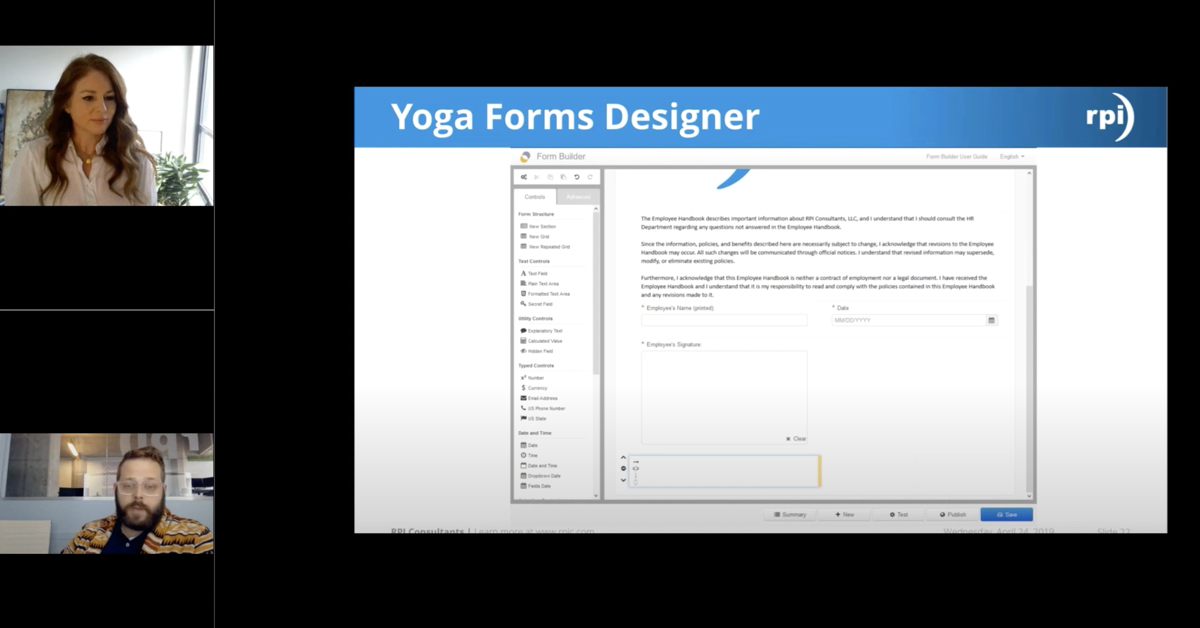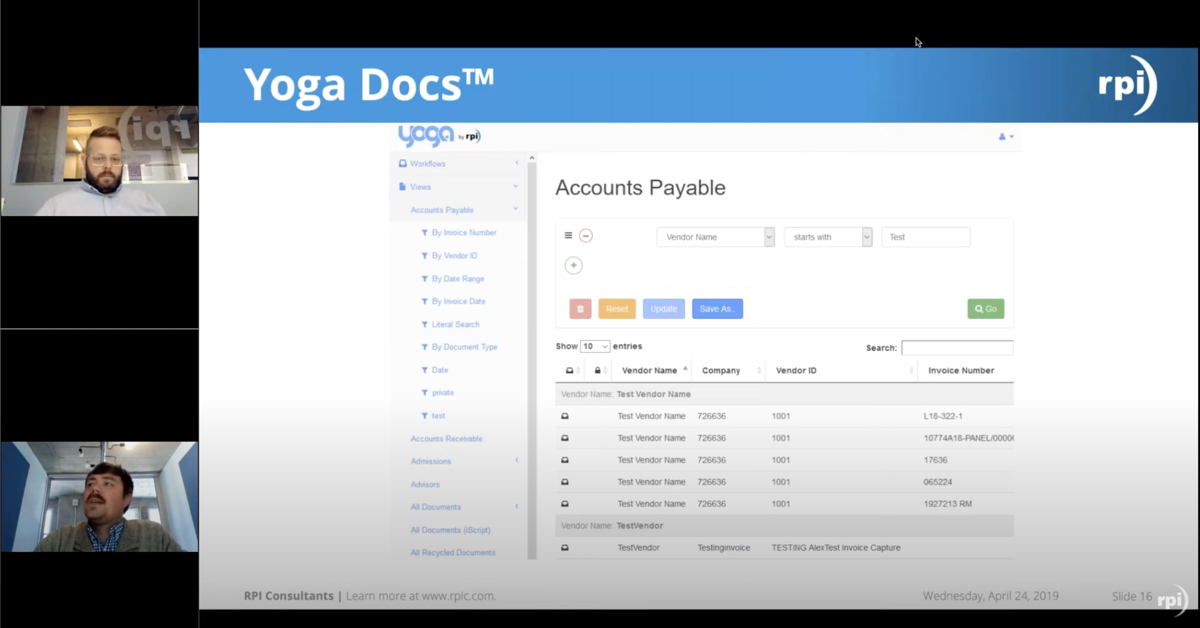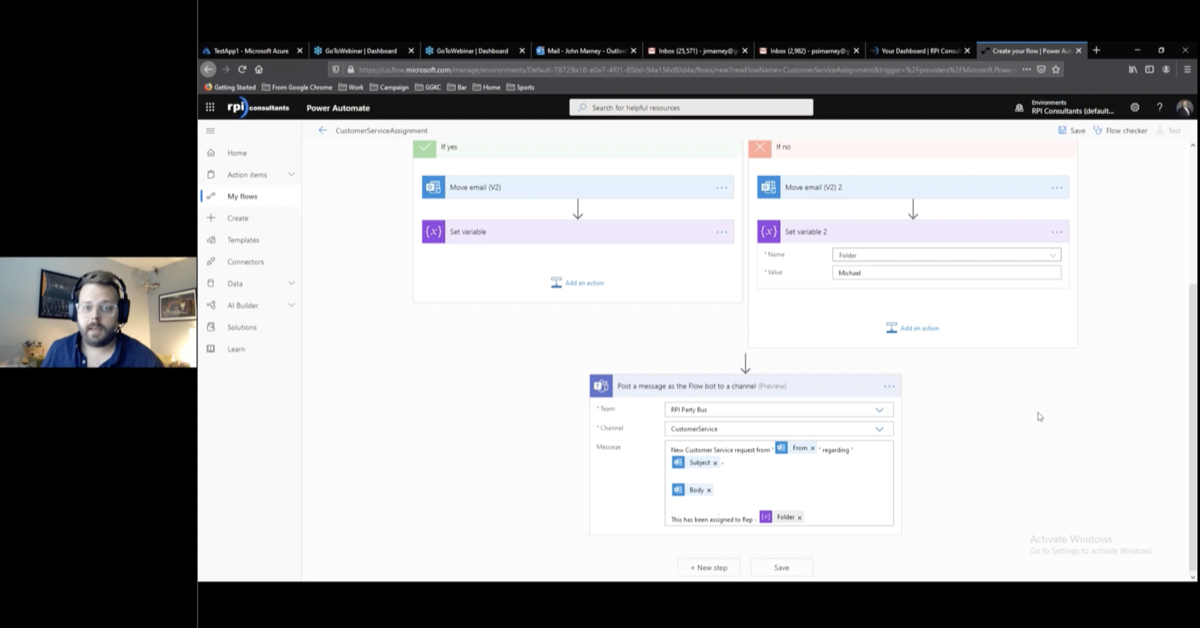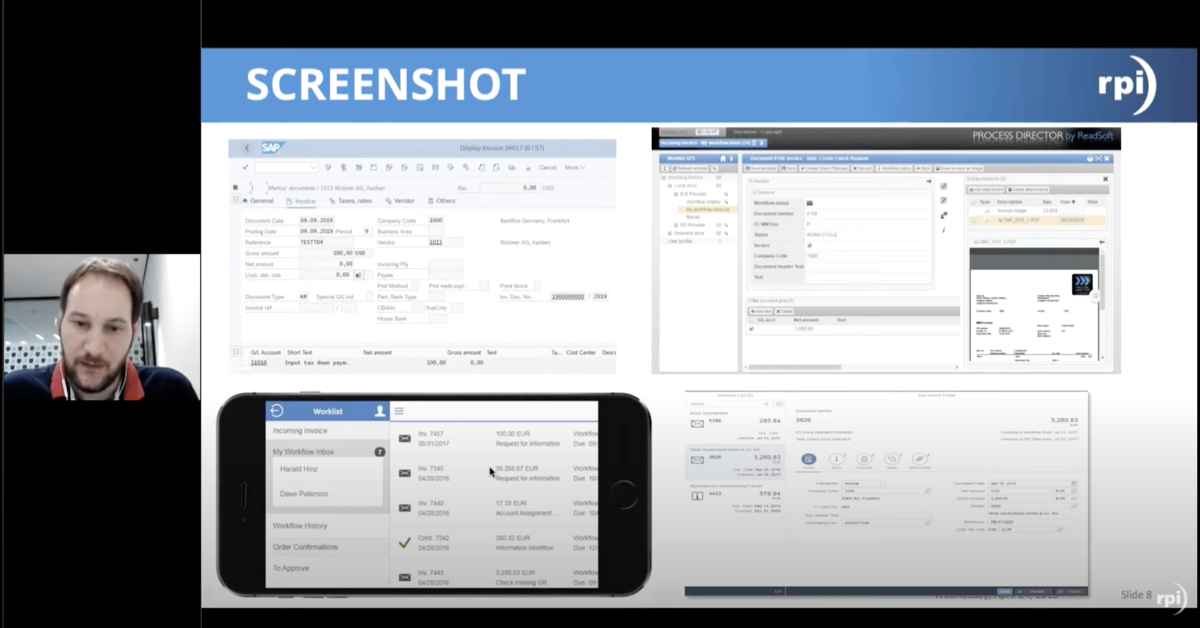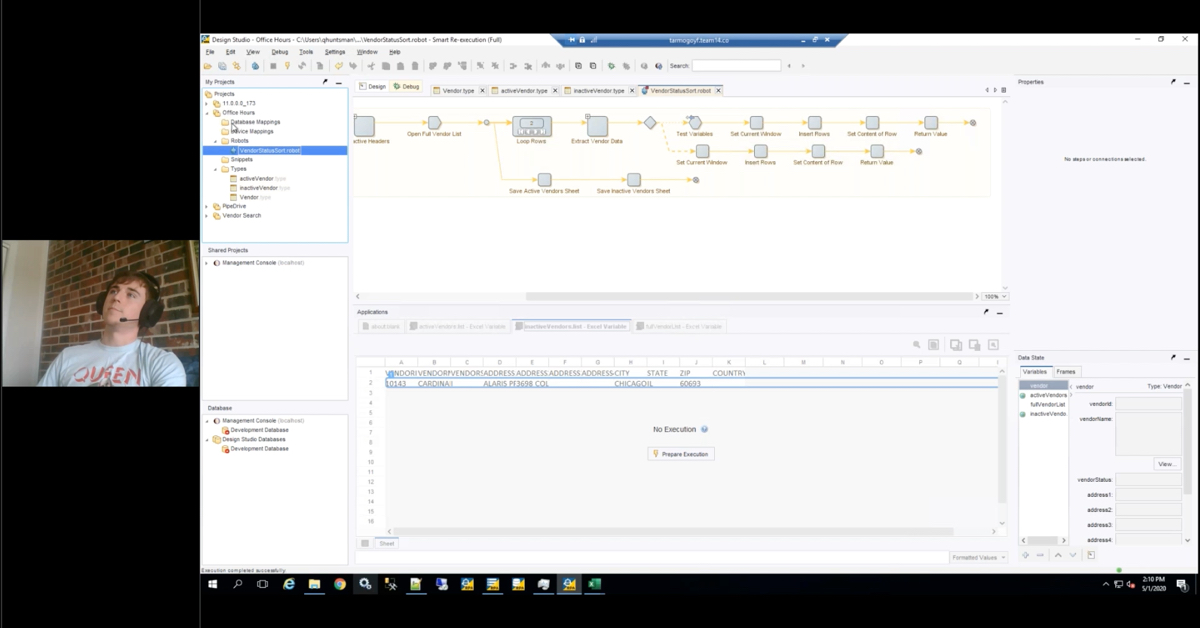Landmark 101 for LSF Administrators
Join RPI while we present Landmark 101 for LSF administrators, Part of our Winter Webinar Wonderland series. This webinar features special guest Jeremy Stoltzfus delivering his widely acclaimed presentation on the nuances of Landmark administration.
Transcript
Keith: My name is Keith Wayland from RPI. I want to thank all of you for taking the time to attend this very special presentation. We started doing these live webinars about a year and a half ago. A lot of success, they’re very popular. Today we’re honored to have a very special, Mr. Jeremy Stoltzfus from Penn State Hershey Medical Center, delivering a presentation on administering Landmark for old school LSF system administrators. It’s a very popular presentation that he’s delivered at the Keystone if I’m not mistaken. We’re very excited to host him today.
Before I hand off, a couple of quick house keeping notes. One is there is a live video feed, you should be able to toggle between the video feed and the PowerPoint as you like on your computer. Second, Jeremy loves questions so if you have any questions please type them into the GoToWebinar questions module and we’ll ask them as the opportunity arises. It helps improve the dynamic of the overall presentation. Thirdly, and most importantly, we will be recording this and will be putting it up on YouTube and you will able to see that link later and share it. Without further ado I give you Mr. Jeremy Stoltzfus.
Jeremy: Thanks. Thanks Keith. Thanks for having me here. It’s a pleasure to be able to do this and share this information. A little bit about my organization that I work for. I work for Penn State Hershey Medical Center. We are an academic medical center with about eleven thousand employees currently. We are like all other healthcare entities in the middle of several mergers and acquisitions. We had our first major acquisition July first. We’ve got another planned coming up this fall and then another one talking early spring. We’ve got a lot of activity. By the end, a year from now, we could be about twenty thousand employees with all the acquisitions that we’re looking at. We have been a Lawson customer running the full S3 suite of applications since about 2000.
A little bit about me personally. I’m twelve years as a Lawson system administrator on LSF. I started with version 7.3.3 environment and 7.2.4 applications. I’ve been through several major upgrades though that, you can see the list here. Also, since I’ve been at Hershey I’ve been a part of some major implementations. Implemented LBI, mobile supply chain just recently. Actually our hospital had it and then decommissioned it and then purchased it again. We implemented Process Flow Integrator, the previous process automation tool and then went through the Landmark IPA upgrade to migrate all of our process flows from that tool into Landmark. The most recent two, the Global HR and talent acquisition module, which we went live with that in June of this past year. The Infor expense management tool, which is live as of just about a few weeks ago.
We’ve got a lot of major things going on in our organization. I’m part of a team in IT that maintains our Lawson system and keeps it running. Yeah, just keep the system up and running. When I think about Lawson system administration, I’ve been doing it for years and comparing and contrasting to Landmark. As I go through this presentation I’m going to go through some of the things that are the same, some of the things that are maybe similar, and then some of the things that are different or brand new.
First of all, startlaw/stoplaw. As system admins these commands still exist. I list these specific as examples but really there’s a lot of command line utilities that do very much the same thing as LSF. The GEN database, there’s still a gen database that exists. That’s all the metadata about the environment and the application. It’s how the system is set up and configured. Landmark does allow you to install multiple data areas, it’s similar to S3. You can create multiple data areas of the same application and have different instances of that. A perfect example of this is in your testing environment, typically you might have two or three data areas within your test environment.
The technology stack design overall is very similar. At the bottom you’ve got the database, sitting on top of that you’ve got the environment. In LSF it was the LSF environment, Lawson System Foundation, now in Landmark it’s the Landmark Technology Stack, very different technologies but the base structure is still the same. Sitting on top of that environment is your application tier. Once again, on top of that is your Java application server and web server.
Moving on to what’s similar. I had mentioned command line utilities, there are several command line utilities available for exporting database tables, importing database tables, starting and stopping. Some of those very similar tools and utilities that you’re used to today with administering Landmark, getting data in and out of the system and things like that. Process Automation, this is similar, I think most people hopefully by now know the process that Process Automation was a complete rewrite of process flow in a much improved process. It was built on the Landmark platform. I’m going to go into a little bit more detail on all of these items as well. Spreadsheet Designer, equivalent to Microsoft Office add-ins.
Command line utilities, I mentioned some database tools such as your export and your import, things like that that are available. There’s a data area copy utility, copying, doing a refresh of your test data area from your production data area, there’s utilities built in to do that. Database verification, to make sure your data dictionary defined by the application matches what’s actually physically in the database. When you install patches and you do database copies, sometimes the dictionary in the actual database can get out of sync so there’s utilities to verify that as well on the Landmark side.
Then of course your application installation and upgrade utilities. Again with LSF you’re running those installs from command line and those same types of things are done on the Landmark command line as well. The security system configuration, there’s a tool called SecAdmin. This is very similar to your SSO config utility on LSF. You’re defining all your security protocols, your authentication schemes and things like that. With the SecAdmin you can also grant users access and create user configuration. More command line utilities to go for grid management, I’ll go into the grid in a little bit further detail later on, but utilities to maintain start nodes, stop nodes, add nodes and things like that, basically manipulating the grid.
I mentioned Process Automation which is a rewrite of Process Flow. It’s basically a much … All the things that you want a process flow to do but couldn’t, they really build into Process Automation. Infor Lawson did a really great job in rewriting that utility. This Process Automation is such an integral part of Landmark, it’s built into the system and it’s built into every application that is delivered Landmark. It’s really a powerful utility within the Landmark environment and applications.
The rich client, which is a user interface, allows you access to the administration of Process Automation. In Process Flow you had several desktop components, you had a scheduler, you had the configuration piece, the web client where you administered work units. There was also a couple other utilities on the desktop that you had to install. The rich client with Process Automation brings them all together. They’re all in one spot and you can get to anything and administer work units, your process flows and your user setup configuration and things like that.
Process Automation really takes advantage of async queues. Async queues is a Landmark technology thing that processes things in batch. I’ll go into a little bit more of that later. I mentioned Spreadsheet Designer, which is your equivalent to Microsoft Office Add-ins. It’s very similar where you’re querying data and you have the ability to upload that data directly to and from the application. It is much more powerful than Office Add-ins was. It’s a lot of flexibility, like I said there’s query and upload both to business classes. Business classes is a Landmark application term in how the system stores the data. It’s much easier to use, for example it does auto-mapping. When you query a Landmark business class and you pull that into your spreadsheet and then you go to insert and upload a Spreadsheet Designer upload as well, as long as your column names match exactly what’s in that business class it will automatically map everything for you, you don’t have to do that piece. It makes the upload process much easier.
Speaker 3: I’ve got a question. The question is, is there a migration tool for existing Add-ins to Spreadsheet Designer? It’s kind of not a one to one in terms of the applications they hit, but I’ll let you take that on.
Jeremy: Yeah. There’s not really a migration tool because with Spreadsheet Designer versus Add-ins, Add-ins when you did an upload or when you did a query you were querying the database table directly. When you were doing an upload, you were uploading to those forms directly, your HR11s, your AP10s and things like that. In the Landmark world with Spreadsheet Designer you’re going against a business class. It’s a complete remap of your data. Some of the tables will line up, for example an employee table, there’s an employee business class and some of the fields are similar but what you’ll find when you move to a Landmark application that the data model is different, it’s very different.
One other key things about Spreadsheet Designer for administrators is that it can be used for administration. I mentioned when you’re utilizing Add-ins you did queries against either the form or the table and then when you did an upload you had to go against the form itself. With spreadsheet designer both the query and the upload is against a business class. A business class is nothing more than the definition … It loosely relates one to one to a database table but it’s a little bit more involved with that once you talk about derived fields and conditional fields and things like that.
With Spreadsheet Designer for administration purposes, everything basically in Landmark is a business class. Any business class that you have the ability to update directly, whether it be rich client or through the application, through the web layer, you can query an update in Spreadsheet Designer. A key thing for me that I use is for security updates. In LSF world, no more going into the security administrator to apply roles and groups and things like that, it can all be done through Spreadsheet Designer and a simple upload. Also, when you talk about applications within Landmark you have agents and user context which link specific data elements. Think of in the S3 world with your self service identities that you had you had to map that identity to an employee number, your RMID had to be mapped to employee number, and the agent is a similar type of thing.
The user context gives you access to a certain part of the application. Those things can also be uploaded via spreadsheet designer. This was a very key tool during our Global HR implementation that I used. We have around ten thousand, eleven thousand employees at the time of our implementation. Somehow all of those actors, all of those user IDs had to be created and linked to those employee numbers, that was done through a couple of queries and a spreadsheet designer upload to put all that information together.
What’s different with Landmark? The biggest thing is that there’s no more COBOL. COBOL goes away with Landmark applications, they are all Java based applications. With Java, of course, it uses a lot more memory and in memory applications are stored. Yeah, Java. Data encryption within the database, there’s fields like social security number which is actually encrypted in the database. You’re DBAs can’t just go into the database and run a query on the social security numbers and pull that information, it does more to protect the data. Security is back in the database, when we all upgraded to LSF 9 we were forced to install an LDAP to hold all the security information.
While that’s great and it’s a fast repository we all now that it added an extra layer of complexity, I don’t know that anybody really enjoy that layer. I know for one it’s hard to get information in and out of that outside of their utilities. It makes some things challenging. The security has been put back into the GEN database, it makes it easier, you can query. Again, because they’re in business classes, you can use spreadsheet designer to get to that data and update it in the backend.
Batch processing, I touched this a little bit earlier. Batch processing, in the S3 world we have these batch programs that we submit in the job scheduler and they just go off and do their thing. It’s handled a little bit different on the Landmark side. It’s handled through various queues, async queues. You basically are submitting a large volumes of transactions and it’s keying through those transaction record by record. You can see those transactions as you can monitor the number of transactions that have processed and have gone through.
Speaker 4: I’ve got another question here. Is data encryption used with IPA or is that only if you have other Landmark applications?
Jeremy: I don’t know that data encryption is used within IPA, and even within the Landmark applications there are only specific items that are encrypted in the database. Social security number, for one, I know for sure. I would imagine when financials come over to Landmark, that things like bank account information would be secured as well.
Speaker 4: Thank you.
Jeremy: All right, what’s new with Landmark? Applications are a little bit more segregated. You think of S3 when you take an upgrade to an application, maybe you’re running HR, Finance and Supply Chain, the three major suites. When you take that upgrade you’re upgrading all three of those major application suites at the same time. With Landmark the applications are a little bit more segregated. Currently there’s a Supply Chain module now, and there’s an HCM module now for HR. Those modules can be upgrade independently of one another, it’s not a all or nothing approach with the applications.
There’s and administrative mode, you can actually put the system into an administrative mode, it prevents users from getting into the system but it allows you as an administrator to still issue those command line utilities and to do things on the backend that you need to take care of. In the LSF world we would do database maintenance or we would do system maintenance and we would have to take the system down but we would still sometimes need to get into the web layer. I’ve done things such a renaming the portal HTM file and replacing with basically just an HTML page that says, “Hey, the system’s down you can’t get in,” and things like that. The same thing, if I know that there’s users on nine that are still running in LID you had to put your system into a single user mode basically to prevent anybody from logging into the system. With the administrative mode it simplifies that.
Scalability, this is something that’s really coming with Xi and the Xi level of technology. It allows you to scale your system across multiple servers. One application can reside on one physical server or VM and another application can reside on a different VM to load balance. Right now with the ten version of technology you are restricted to have all your applications reside on one server and that does make the server requirements a little bit hefty. For example our Landmark server which was currently sized to run Global HR, the Supply Chain module and of course our Process Flow, our stand alone process flows, was sized at a hundred and twenty gig of RAM and thirty two cores. We’ve got a beefy server that’s running. That was sized for twenty thousand employees, we’ve sized it but you can see that ongoing maintenance of that is big. With Xi you can now scale that out and distribute that load across multiple servers.
I talked about the grid, the grid is really the flexible architecture of Landmark. This to manage memory and to provide more scalability within the application. Of course Configuration Console with the Landmark applications being delivered. Configuration Console provides a way to quickly modify your screens and your security within the application to really enforce this, I’ve kind of stopped using the word customized but that’s really what it is, you’re tweaking the strings, you’re hiding fields, you’re adding user fields and things like that. That’s what the Configuration Console allows you to do.
I mentioned the grid and how it’s core at the technology layer. This is really where you’re monitoring the application, you’re controlling your memory usage, you can to some degree provide some scalability to make sure that the application is running as efficient as it can. An example of that is your IPA process automation, default configuration it will only actively process two work units at any given time. There’s a setting that you can increase that number but you start to juggle a performance issue if you increase it too high. What the grid allows you to do is to add additional IPA nodes within the Landmark environment so that it can then essentially handle more load.
This is where you’re monitoring your applications. If nodes are restarting you can easily see that. Maybe they’re restarting but they’re running out of memory so you can increase the size of memory to the nodes. You get access to the log files so you can see errors and warnings that are happening against the application. There’s a bindings file, this is really were you can take a look at the nodes and you can specify a specific application to a specific node, it can split things out and segregate things. Maybe you’re running Process Automation for your standalone S3 environment but you’re also running Human Capital Management, the Global HR product. You can split that activity out so they’re running in separate nodes to give you a little bit more flexibility there.
This is a screenshot of the grid. This is actually I think out of our production environment, what’s it’s currently sized to. You can see on the far right side the heap usage, that’s where you’re monitoring the node size and how much memory’s being consumed. You can monitor the application. The Java virtual machine is actually doing what it needs to be doing and it’s cleaning itself up. You want to see that heap usage go up and then you want to see it go down, you want to see that consistent activity of it cleaning itself up. You don’t want to see it hanging too high. This is a way you can monitor that.
You see in the middle there where you see some red and yellow numbers, that’s the access to your warnings and your errors that are in the log files, this is a quick way to pull them up. You can see there’s multiple node types on here. I’ll briefly go over these node types. At the very bottom you’ve got a managed Landmark node, this is the node that actually accepts all the command line commands that you input into the system. Things like startall, stoppall, but then also your DB commands, importing your database, records, CSV files and things like that. You’ve got an LADS, this is kind of your database structure management, it maintains your database integrity and enables that communication. This also passes off the rich client installation, when you go to the URL to install rich client, it’s handled through this layer.
You’ve got an LASE node, very similar to S3 where it’s handling all your security authentication and authorization into the application. You’ve got an interactive node, here’s where your general business logic execution lies. When a user’s in the rich client application and they’re interacting with the application, they’re bringing up screens, they’re looking up data, this is that where that logic’s getting processed. Then you’ve got a list batch node which then handles list retrieval and background processing. Your list retrieval, you’re bringing up a list of employees or maybe it’s a report within the Landmark environment is bringing back those data. That work is handled in this node.
The Landmark document node is for report document creation, there’s various things within that, Landmark applications that will create a PDF document and other items like that, emails and things like that. This is where that’s handled. Then of course your LPA node for your process automation, this again is for all data areas or your can split it out. It really handles all of those work units and processes, all those work units independently of your interactive node. It’s kind of running on its own little memory area and that enables you to really … With all these different nodes it basically enables you to really provide scalability and beef up where you need it.
Then of course your async node which I talked about earlier. This is your background processing, taking care of sending emails, any flows that you have scheduled, day processing, and things like that. This is just a screenshot of one of the logs that comes up when you click on those numbers, it shows the warnings and things like that. A quick easy way to get access to the warnings and error messages that are happening in your system. Within the grid there’s the configuration manager, this is where you would be identifying all of your … Setting and configuring all of your properties. I mentioned earlier about the LPA node by default only processes two work units simultaneously. There’s a setting in here where you would be able to increase that to four or five. You also can set up your bindings and things like that to scale your nodes and things like that.
This is a screenshot of the grid properties and going through some of those things. There’s a lot, just on the Java heap itself and tuning the system and the Java nodes within the system. This shot right here is where you’re going through and you’re actually looking at all the nodes that you have defined in your grid and where you’re assigning the memory size to them. You can quickly increase the heap size on any one of these node. A simple restart of that node will enable you to dynamically increase the memory on any given node. If you’ve got multiple nodes or multiple instances of the same node, you can shut down a single node and have it restart automatically and it will automatically restart with the new memory size.
Here’s a screenshot of where you would actually specify how many of what type of node that you want, where you specify what applications, which bindings run within each particular node. In the future, it will allows you to basically specify which host those are running on as well, if you scale up and have multiple hosts running within your Landmark environment. Of course of it shows you the status of all those as well. I had mentioned Configuration Console, this is where you really can enhance your Landmark applications. Adding user fields within a business class, you think of an employee business class and you have a employee ID within that employee business class but maybe at your organization you have another identifier that’s used within your organization. For example we have another account that gets generated and we can actual create a user field and that gets fed and updated into the user field through the business class. The thing is, as you’re adding these user fields to your business classes, they will then be there on spreadsheet designer for you to manipulate via spreadsheet.
You can also modify screens. This is where you’re hiding fields on screen, you’re putting maybe additional logic on screens, where you want to make fields required or conditional fields where you want to make a field required if a certain value is entered on a different field, things like that. You can also define new action requests, within a Landmark application an action request is an integral part of the system. You can define your own action requests that would in turn trigger a unique process flow that may be unique to your organization, outside of what’s delivered out of the box functionality.
Of course your list views as well, you can modify these list views, adding columns. You bring up a listing of your employees, for example, and default out of the box we’ll have employee number, your name and maybe one or two other fields but you can add additional pieces of information that are on that business class, accessible from that business class into that list and essentially create reports at that point. You can create filter criterias and things like that.
The Configuration Console is also where you modify security. In the LSF world when we went to the Lawson Ssecurity model with roles and security classes, those roles get mapped to users. It’s a very similar concept within Landmark. The nice thing about Landmark is those base roles come delivered with the application. There’s standard roles delivered with the application for various roles within the application of what you might be. For example, within the Global HR application there’s an HR generalist security role, it comes pre-built with all the security that will fit most clients. There’s also a recruiter role where if you’re a recruiter in your organization then you would have access to the applicants and the candidates and things like that. Managers, hiring managers, and direct supervisors, again those classes and those roles come pre-delivered with the application.
With configuration console you can take those classes and you can modify them. What you’re really doing is you’re taking an existing class or an existing role and you’re making a copy of it and you’re tweaking it, you’re making your changes. You can add additional classes to a given role, you can take classes away from a role, you can go in and modify the security classes and give additional access or take away access. For example if your HR generalist doesn’t have enough access, in our organization our HR generalists do a lot more than what was delivered out of the box. We modified the security roles so that we could allow our HR generalists to do more actions than what was predefined.
You can also create web services. This is really a cool area which I haven’t gotten into much. I’ve explored it a little bit. What this allows you to do is create a web service that exposes certain business class data. If you have an external system that maintains … Maybe you have an external system that maintains your phone book information, things like that where you can have that information fed back into Lawson Global HR and have that updated directly via a web service call. With Configuration Console there is utilities to export your configurations. You’re working on something in your test environment, it’s tested, your end users are satisfied with it, you can use the cdexport utility and you can export those configurations.
Basically it creates a zip file on the server that you can then move to your production environment and import it directly into your production environment, without having to re-key and all those changes, all those configurations that you’ve made. You can do that directly with the cdexport. There’s all kinds of options on that utility to specify certain things, certain business classes that you want. It’s not necessarily an all or nothing. It will do your forms, your lists, your action requests and process flows.
You can also do this from the rich client. Within the rich client, when you’re in Configuration Console itself you can select your specific business class, down to a specific configuration. Maybe it might be a specific form or a specific list that you’ve modified and you’re moving that one piece to production. A perfect example of how I utilize that is we’ve got a lot of stuff in our test environment right now. Some of it’s kind of in progress and has been tested or partially tested, some of it’s done being tested and they’re ready for it to move to production. Instead or me re-keying those forms, those configurations that I’ve made to those forms, I can go into the Config Console in rich client and select that specific configuration for that form or list and export it into a single zip file and then take that and import that on the backend. when you do the export via rich client, you do have to still go command line to do the import on that as well.
I said the cdimport command is the utility that you use to import your configurations. It can be all of them, it can be a subset of them. A good example, again, of the cdexport and cdimport, any time I do a data refresh from our production environment to one of our test environments I always do a full cdexport of all of our configurations in that test environment, prior to copying the data because when you do a full data it will bring over any configurations that you have and will overwrite what you might have in your test environment. Those configurations are stored in the database so it will overwrite them when you do a full system copy. Prior to doing that refresh from production I do the full export, then I do the refresh and then I can do the cdimport and bring those configurations that I previously had in my test environment, I can bring them back into my test environment and I haven’t lost anything.
This will also bring over user settings as well. I didn’t even realize it but one of the first time after we did a data copy as we were implementing, some of our users changed their screen color in one environment but not the other so they could visually see which environment they were in. The first time I did a data refresh their color was changed. It brings over settings like that as well. Then of course there’s the cdverify, this is really an important tool after a patch is applied. When you’re applying a Landmark application patch you really want to run this verify utility to make sure that the configurations you have in place aren’t conflicting with something that that patch has delivered. Maybe a form name has changed or form is taken away or something like that and you’ve had configurations against that. This utility will report back to you to say, “Here’s a problem I found with these particular configurations,” and will allow you to see them in a list and to be able to resolve those issues. That’s all the content that I had. At this point I’ll open it up for questions.
Keith: I want to go ahead and encourage the audience, we do have Jeremy, it’s a very special occasion here, it’s your opportunity to stump Mr. Stoltzfus or get your questions answered. While people are thinking about that, I honestly want to command Jeremy on a great presentation. I want to say that any time you can deliver something that’s packed full of content, it’s very valuable to the rest of the community. We’re very excited to try this today. Any of you out there, we know there’s a lot of experience in the Lawson community, a lot of talent. If you have a presentation and you’d like to come by Baltimore the next time we do some of these and present, by all means reach out. We’re having a lot of fun doing these. I’ve got a couple here. As far as the … There’s a question about the slide deck, this will be recorded on YouTube so you’ll be able to see it. As for the slide, you’ll have to ask Mr. Stoltzfus directly for that, I don’t know what his default answer is, whether he shares those or not.
Jeremy: Yeah I can provide that.
Keith: You can provide that.
Jeremy: Yeah.
Keith: We’ll connect you. I’ve got a question here about patches in Landmark, how are those applied?
Jeremy: There’s two types of patches within Landmark. You’ve got the Landmark technology patches themselves and then you’ve got the application patches. The Landmark technology patches are kind of like a service pack basically. It’s a Java program, a Java installer similar to some of the things we’ve seen on the LSF side where it brings up a Java application to go through and make sure all your settings and everything are accurate. For the most part it pretty much kind of does it on its own, it’s not a very complicated process for the Landmark technology piece.
Now for the application it’s a little bit different because there’s a few extra steps because of the source control piece of it, the subversion piece where the source gets delivered … Not the source but the executables get delivered and stored and then it creates a repository and then those repositories allow you to … then you have to apply those repositories to a specific data area. But again it’s all launched from the command line and an interactive window to go through all the options to do that.
Keith: Do you find, I know that Infor is trying to transition to have more of a, how should I say, uniform, universal sort of patch released across those customers. Do you find yourself doing one off patches or you mostly do like with the cyclical upgrades is when you get caught up?
Jeremy: With Landmark applications they don’t really deliver the one off patches. It’s pretty much a full redeploy. It’s basically like a service pack. They do release those, it seems to be almost weekly, especially for the technology layer, the Landmark layer itself. I know two weeks ago, right before … No, actually it was just last week, I installed patch level thirty one and this week I heard that thirty two. Thirty one just came out last week too. There’s a lot more frequency of that, of the patches coming out.
Keith: That might slow down at some point. I have another question here, if we have just IPA, is the full Landmark admin training required or is there a better way to learn the administrative stuff?
Jeremy: I basically started out with just IPA as part of one of the final prereq before our version ten upgrade and basically did the Landmark and IPA installation myself and kind of tinkered with it. It really wasn’t too challenging. I certainly have learned a lot over the past, I guess about two years now since we’ve had Landmark running in our environment. But yeah, I didn’t take any official training course. I think it probably could be beneficial but if you’re a long time LSF administrator you could probably get in and figure most things out.
Speaker 5: If a Landmark patch requires a grid update, is the grid updated automatically?
Jeremy: In case anybody-
Keith: You’ll have to repeat.
Jeremy: Yeah, just in case anybody couldn’t hear question, a question from in the room was if a Landmark patch requires a grid update will the grid update be applied automatically? The answer is no, you do have to apply a grid patch separately prior to installing the Landmark patch itself.
Keith: Okay, it’s looking like that’s all the questions we have for now. Once again I want to thank Jeremy, I want to thank everybody that attended, I want to thank everybody that asked questions. I want to mention that at 4:00 we’re going to be gathering a group here of consultants with Jeremy hopefully to talk some more Landmark, do a Landmark panel. We have some pre-configured questions for that one that we’re going save the hard stuff. Hope to see you there, good afternoon everyone, thank you.
Want More Content?
Sign up and get access to all our new Knowledge Base content, including new and upcoming Webinars, Virtual User Groups, Product Demos, White Papers, & Case Studies.
Entire Knowledge Base
All Products, Solutions, & Professional Services
Contact Us to Get Started
Don’t Just Take Our Word for it!
See What Our Clients Have to Say

Denver Health
“RPI brought in senior people that our folks related to and were able to work with easily. Their folks have been approachable, they listen to us, and they have been responsive to our questions – and when we see things we want to do a little differently, they have listened and figured out how to make it happen. “
Keith Thompson
Director of ERP Applications
Atlanta Public Schools
“Prior to RPI, we were really struggling with our HR technology. They brought in expertise to provide solutions to business problems, thought leadership for our long term strategic planning, and they help us make sure we are implementing new initiatives in an order that doesn’t create problems in the future. RPI has been a God-send. “
Skye Duckett
Chief Human Resources Officer

Nuvance Health
“We knew our Accounts Payable processes were unsustainable for our planned growth and RPI Consultants offered a blueprint for automating our most time-intensive workflow – invoice processing.”
Miles McIvor
Accounting Systems Manager
San Diego State University
“Our favorite outcome of the solution is the automation, which enables us to provide better service to our customers. Also, our consultant, Michael Madsen, was knowledgeable, easy to work with, patient, dependable and flexible with his schedule.”
Catherine Love
Associate Human Resources Director

Bon Secours Health System
“RPI has more than just knowledge, their consultants are personable leaders who will drive more efficient solutions. They challenged us to think outside the box and to believe that we could design a best-practice solution with minimal ongoing costs.”
Joel Stafford
Director of Accounts Payable
Lippert Components
“We understood we required a robust, customized solution. RPI not only had the product expertise, they listened to our needs to make sure the project was a success.”
Chris Tozier
Director of Information Technology

Bassett Medical Center
“Overall the project went really well, I’m very pleased with the outcome. I don’t think having any other consulting team on the project would have been able to provide us as much knowledge as RPI has been able to. “
Sue Pokorny
Manager of HRIS & Compensation
MD National Capital Park & Planning Commission
“Working with Anne Bwogi [RPI Project Manager] is fun. She keeps us grounded and makes sure we are thoroughly engaged. We have a name for her – the Annetrack. The Annetrack is on schedule so you better get on board.”
Derek Morgan
ERP Business Analyst
Aspirus
“Our relationship with RPI is great, they are like an extension of the Aspirus team. When we have a question, we reach out to them and get answers right away. If we have a big project, we bounce it off them immediately to get their ideas and ask for their expertise.”
Jen Underwood
Director of Supply Chain Informatics and Systems
Our People are the Difference
And Our Culture is Our Greatest Asset
A lot of people say it, we really mean it. We recruit good people. People who are great at what they do and fun to work with. We look for diverse strengths and abilities, a passion for excellent client service, and an entrepreneurial drive to get the job done.
We also practice what we preach and use the industry’s leading software to help manage our projects, engage with our client project teams, and enable our team to stay connected and collaborate. This open, team-based approach gives each customer and project the cumulative value of our entire team’s knowledge and experience.
The RPI Consultants Blog
News, Announcements, Celebrations, & Upcoming Events
News & Announcements
3 Key Insights from the 2024 Infor Velocity Summit
Chris Arey2024-10-21T18:48:08+00:00October 15th, 2024|Blog|
Healthcare Supply Chain Insights from AHRMM 2024
Chris Arey2024-10-06T16:42:23+00:00October 1st, 2024|Blog|
ERP Security: Issues to Consider & Best Practices to Follow
Chris Arey2024-09-21T10:00:15+00:00September 17th, 2024|Blog|
Open Enrollment 2025: Top 5 Tasks for Employers
Chris Arey2024-09-11T19:03:25+00:00September 3rd, 2024|Blog|
ERP Use Cases: The Top 5 for Local Governments
Chris Arey2024-08-22T19:32:29+00:00August 20th, 2024|Blog|
High Fives & Go Lives
AP Health Check at Jeffries Creates Path for Increased Efficiency, Visibility
Michael Hopkins2024-02-26T13:51:02+00:00November 30th, 2020|Blog, Brainware, High Fives & Go-Lives, Perceptive Content / ImageNow|
Customer Voices: Derek Morgan, MNCPPC
RPI Consultants2020-12-16T17:50:32+00:00August 14th, 2020|Blog, High Fives & Go-Lives, Infor CloudSuite & Lawson|
Voice of the Community: Jen Underwood, Aspirus
RPI Consultants2024-02-26T06:04:23+00:00March 14th, 2020|Blog, High Fives & Go-Lives, Infor CloudSuite & Lawson|
Voice of the Community: Keith, Denver Health
RPI Consultants2024-02-26T06:01:19+00:00March 14th, 2020|Blog, High Fives & Go-Lives, Infor CloudSuite & Lawson|
AP Automation Case Study at Nuvance Health
Michael Hopkins2024-02-26T13:48:07+00:00March 4th, 2020|Blog, High Fives & Go-Lives, Infor CloudSuite & Lawson, Knowledge Base, Kofax Intelligent Automation, Other Products & Solutions, Perceptive Content / ImageNow|
Upcoming Events
RPI Client Reception at CommunityLIVE 2019
RPI Consultants2024-02-26T06:09:32+00:00June 20th, 2019|Blog, Virtual Events, User Groups, & Conferences|
Free Two-Day Kofax RPA Workshop (Limited Availability)
RPI Consultants2024-02-26T13:24:38+00:00June 13th, 2019|Blog, Virtual Events, User Groups, & Conferences|
POSTPONED: Power Your Logistics Processes with a Digital Workforce with Kofax
RPI Consultants2024-02-26T13:29:29+00:00May 29th, 2019|Blog, Virtual Events, User Groups, & Conferences|
You’re Invited: Customer Appreciation Happy Hour
RPI Consultants2024-02-26T06:27:45+00:00March 14th, 2019|Blog, Virtual Events, User Groups, & Conferences|
RPI Consultants Sponsors 2019 Michigan Manufacturing Operations Conference
RPI Consultants2024-02-26T13:53:21+00:00January 30th, 2019|Blog, Virtual Events, User Groups, & Conferences|





